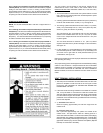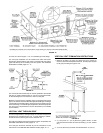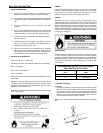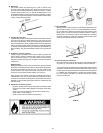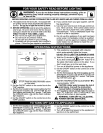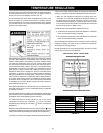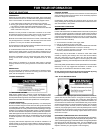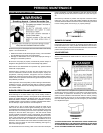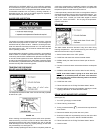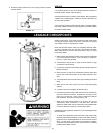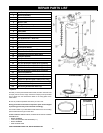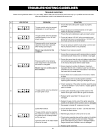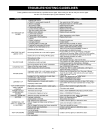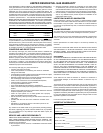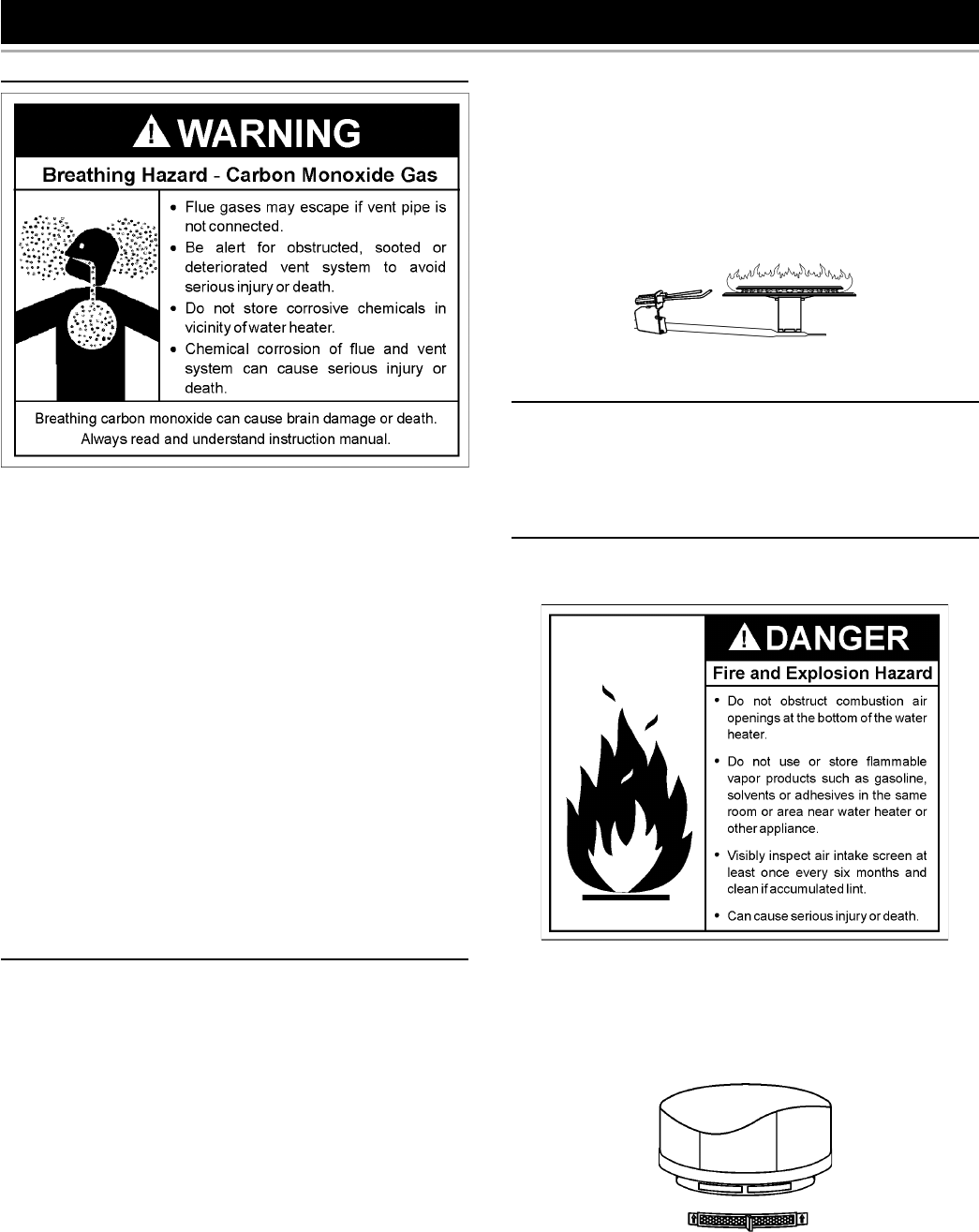
24
VENTING SYSTEM INSPECTION
At least once a year a visual inspection should be made of the venting
system. You should look for:
1. Obstructions which could cause improper venting. The combustion
and ventilation air fl ow must not be obstructed.
2. Damage or deterioration which could cause improper venting or
leakage of combustion products.
Be sure the vent piping is properly connected to prevent escape of
dangerous fl ue gasses which could cause deadly asphyxiation.
Obstructions and deteriorated vent systems may present serious
health risk or asphyxiation.
Chemical vapor corrosion of the fl ue and vent system may occur
if air for combustion contains certain chemical vapors. Spray can
propellants, cleaning solvents, refrigerator and air conditioner
refrigerants, swimming pool chemicals, calcium and sodium chloride,
waxes, bleach and process chemicals are typical compounds which
are potentially corrosive.
If after inspection of the vent system you found sooting or deterioration,
something is wrong. Call the local gas utility to correct the problem
and clean or replace the fl ue and venting before resuming operation
of the water heater.
BURNER OPERATION AND INSPECTION
Flood damage to a water heater may not be readily visible or
immediately detectable. However, over a period of time a fl ooded water
heater will create dangerous conditions which can cause DEATH,
SERIOUS BODILY INJURY, OR PROPERTY DAMAGE. Contact a
qualifi ed installer or service agency to replace a fl ooded water heater.
Do not attempt to repair the unit! It must be replaced!
At least once a year a visual inspection should be made of the
main burner and the hot surface igniter assembly for proper fl ame
characteristics and ignition sequences. This can be done by removing
the Outer Door and viewing the main burner operation through the
Viewport on the Inner Door, see Figure 1. The main burner should
provide complete combustion of gas, ignite rapidly, give reasonably
quiet operation, and cause no excessive fl ame lifting from the burner
ports. If the proper fl ame characteristics are not evident (see Figure
20), make sure that the fl ow of combustion and ventilation air is not
blocked on the Air Intake Screen at the base of the water heater (see
Figure 21), the Lint screen on the blower assembly (see Figure 1),
and in the venting system.
You should also check for sooting. Soot is not normal and will impair
PERIODIC MAINTENANCE
proper combustion. A visual inspection of the main burner and HSI
igniter assembly should also be done at least once a year, see Figure
20.
Soot build-up indicates a problem that requires correction before
further use. Turn “OFF” gas to water heater and leave off until repairs
are made, because failure to correct the cause of the sooting can result
in a fi re causing death, serious injury, or property damage.
FIGURE 20.
BURNER CLEANING
In the event your burner or burner air openings require cleaning, turn
the blower switch to the “OFF” position and allow the burner to cool.
Call a service agency to remove and clean the burner and correct the
problem that required the burner to be cleaned.
HOUSEKEEPING
Vacuum around base of water heater for dust, dirt, and lint on a
regular basis.
This water heater unit is supplied with a plastic Air Intake Screen that
will fi lter and prevent lint build-up on the bottom of the fl ame arrestor
of this heater. To prevent the lint build-up on the arrestor, the lint
screen must be installed on the Base Pan with the “arrows” pointing
upwards as shown in Figure 21. If the Air Intake Screen is missing
from this heater, please contact your service agency or local installer
for a replacement part.
FIGURE 21.
AT LEAST ONCE EVERY SIX MONTHS A VISUAL INSPECTION
SHOULD BE MADE OF THE AIR INTAKE SCREENS ON THE BASE
OF THE WATER HEATER AND THE BLOWER ASSEMBLY. CLEAN
IF LINT ACCUMULATIONS ARE NOTICED.




